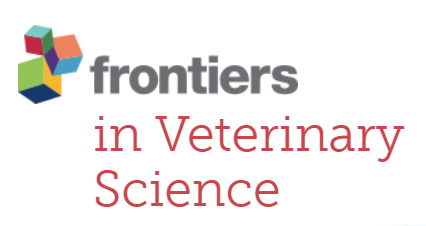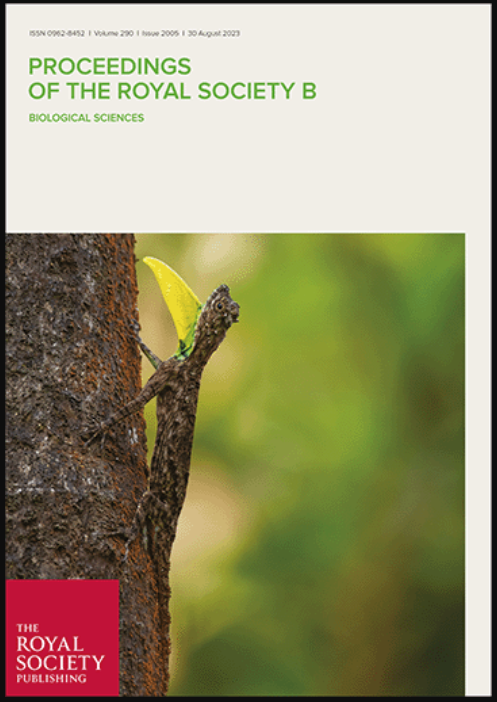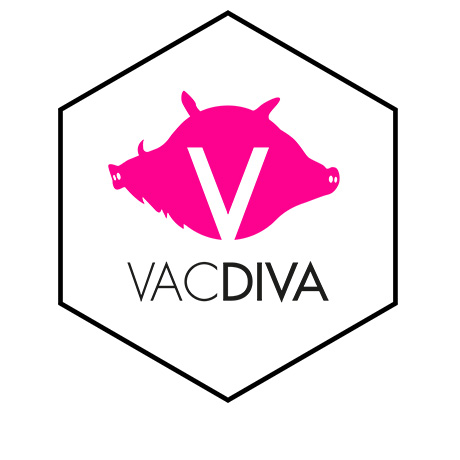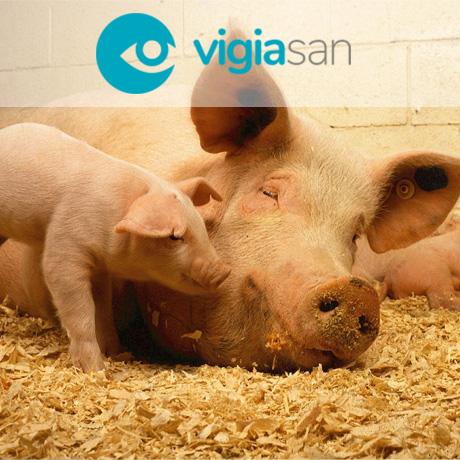Will we get a vaccine for the most lethal disease in the pork sector?
Interview with José Manuel Sánchez-Vizcaíno for AgriNews TV.
Carolina Muñoz Pérez PhD Thesis
On Thursday, March 21, 2024, Carolina Muñoz will defend her doctoral thesis titled "Strategies for African Swine Fever prevention" directed by Professor José Manuel Sánchez-Vizcaíno. The event will take place at 11:30 a.m. in the Conference Room of the VISAVET Health Surveillance Centre at the Complutense University of Madrid.

Abstract:
African swine fever (ASF) is a devastating infectious disease of swine, which is listed as notifiable to the World Organisation for Animal Health (WOAH). In the last few years, the disease has spread worldwide. Nowadays, this pandemic spread poses the greatest threat to the global swine industry. In view of this situation, this doctoral thesis entitled: “Strategies for African swine fever prevention”, aims to develop epidemiological knowledge regarding the most important risk factors for ASF entry into an ASF-free area, in particular, the natural movement of wild boar populations and the international trade of pigs and pork and pork products.
Application of machine learning with large-scale data for an effective vaccination against classical swine fever for wild boar in Japan
We have published a new research article in the journal Scientific Reports.
 Abstract:
Abstract:
Classical swine fever has been spreading across the country since its re-emergence in Japan in 2018. Gifu Prefecture has been working diligently to control the disease through the oral vaccine dissemination targeting wild boars. Although vaccines were sprayed at 14,000 locations between 2019 and 2020, vaccine ingestion by wild boars was only confirmed at 30% of the locations. Here, we predicted the vaccine ingestion rate at each point by Random Forest modeling based on vaccine dissemination data and created prediction surfaces for the probability of vaccine ingestion by wild boar using spatial interpolation techniques. Consequently, the distance from the vaccination point to the water source was the most important variable, followed by elevation, season, road density, and slope. The area under the curve, model accuracy, sensitivity, and specificity for model evaluation were 0.760, 0.678, 0.661, and 0.685, respectively. Areas with high probability of wild boar vaccination were predicted in northern, eastern, and western part of Gifu. Leave-One-Out Cross Validation results showed that Kriging approach was more accurate than the Inverse distance weighting method. We emphasize that effective vaccination strategies based on epidemiological data are essential for disease control and that our proposed tool is also applicable for other wildlife diseases.
Ito S, Aguilar-Vega C, Bosch J, Isoda N and Sanchez-Vizcaino JM.
New insights into the pathogenesis and transmission of Brucella pinnipedialis: systemic infection in two bottlenose dolphins (Tursiops truncatus)
New research article published in Microbiology spectrum.
 Abstract: Brucella spp. are zoonotic pathogens that can affect both terrestrial and marine mammals. Brucella ceti has been identified in various cetacean species, but only one sequence type (ST27) has been reported in humans. However, it is important to conduct surveillance studies to better understand the impact of marine Brucella species on marine mammals, a typically understudied host group. Here, we describe a systemic infection by two related strains of Brucella pinnipedialis (ST25) in a couple of live-stranded bottlenose dolphins, with more severe lesions in the younger animal. Furthermore, B. pinnipedialis was first detected in milk from a female cetacean that stranded with its offspring. Our study reveals novel insights into the epidemiology and pathological consequences of B. pinnipedialis infections in cetaceans, emphasizing the crucial importance of ongoing surveillance and accurate diagnosis to understand the impact of this pathogen on marine mammal populations.
Abstract: Brucella spp. are zoonotic pathogens that can affect both terrestrial and marine mammals. Brucella ceti has been identified in various cetacean species, but only one sequence type (ST27) has been reported in humans. However, it is important to conduct surveillance studies to better understand the impact of marine Brucella species on marine mammals, a typically understudied host group. Here, we describe a systemic infection by two related strains of Brucella pinnipedialis (ST25) in a couple of live-stranded bottlenose dolphins, with more severe lesions in the younger animal. Furthermore, B. pinnipedialis was first detected in milk from a female cetacean that stranded with its offspring. Our study reveals novel insights into the epidemiology and pathological consequences of B. pinnipedialis infections in cetaceans, emphasizing the crucial importance of ongoing surveillance and accurate diagnosis to understand the impact of this pathogen on marine mammal populations.
Vargas-Castro I, Crespo-Picazo JL, Fayos M, Jiménez-Martínez MdlÁ, Torre-Fuentes L, Álvarez J, Moura AE, Hernández M, Buendía A, Barroso-Arévalo S, García-Seco T, Pérez-Sancho M, De Miguel MJ, Andrés-Barranco S, Marco-Cabedo V, Peñin-Villahoz G, Muñoz PM, Domínguez L, García-Párraga D and Sánchez-Vizcaíno JM.
What can we learn from the five-year African swine fever epidemic in Asia?
New research article in Frontiers In Veterinary Science.
 Abstract: Today’s global swine industry is exposed to the unprecedented threat of African swine fever (ASF). Asia, the site of the most recent epidemics, could serve as a huge viral reservoir for the rest of the world given the severity of the damage, the huge swine industry, and the high volume of trade with other countries around the world. As the majority of ASF notifications in Asia today originate from pig farms, the movement of live pigs and associated pork products are considered critical control points for disease management. Particularly, small-scale or backyard farms with low biosecurity levels are considered major risk factors. Meanwhile, wild boars account for most notified cases in some countries and regions, which makes the epidemiological scenario different from that in other Asian countries. As such, the current epidemic situation and higher risk factors differ widely between these countries. A variety of studies on ASF control have been conducted and many valuable insights have been obtained in Asia; nevertheless, the overall picture of the epidemic is still unclear. The purpose of this review is to provide an accurate picture of the epidemic situation across Asia, focusing on each subregion to comprehensively explain the disease outbreak. The knowledge gained from the ASF epidemics experienced in Asia over the past 5 years would be useful for disease control in areas that are already infected, such as Europe, as well as for non-affected areas to address preventive measures. To this end, the review includes two aspects: a descriptive analytical review based on publicly available databases showing overall epidemic trends, and an individualized review at the subregional level based on the available literature.
Abstract: Today’s global swine industry is exposed to the unprecedented threat of African swine fever (ASF). Asia, the site of the most recent epidemics, could serve as a huge viral reservoir for the rest of the world given the severity of the damage, the huge swine industry, and the high volume of trade with other countries around the world. As the majority of ASF notifications in Asia today originate from pig farms, the movement of live pigs and associated pork products are considered critical control points for disease management. Particularly, small-scale or backyard farms with low biosecurity levels are considered major risk factors. Meanwhile, wild boars account for most notified cases in some countries and regions, which makes the epidemiological scenario different from that in other Asian countries. As such, the current epidemic situation and higher risk factors differ widely between these countries. A variety of studies on ASF control have been conducted and many valuable insights have been obtained in Asia; nevertheless, the overall picture of the epidemic is still unclear. The purpose of this review is to provide an accurate picture of the epidemic situation across Asia, focusing on each subregion to comprehensively explain the disease outbreak. The knowledge gained from the ASF epidemics experienced in Asia over the past 5 years would be useful for disease control in areas that are already infected, such as Europe, as well as for non-affected areas to address preventive measures. To this end, the review includes two aspects: a descriptive analytical review based on publicly available databases showing overall epidemic trends, and an individualized review at the subregional level based on the available literature.
Ito S, Kawaguchi N, Bosch J, Aguilar Vega C and Sánchez-Vizcaíno JM
Accelerometer-based detection of African swine fever infection in wild boar

Latest scientific article now released in "Proceedings. Biological sciences".
Abstract: Infectious wildlife diseases that circulate at the interface with domestic animals pose significant threats worldwide and require early detection and warning. Although animal tracking technologies are used to discern behavioural changes, they are rarely used to monitor wildlife diseases. Common disease-induced behavioural changes include reduced activity and lethargy ('sickness behaviour'). Here, we investigated whether accelerometer sensors could detect the onset of African swine fever (ASF), a viral infection that induces high mortality in suids for which no vaccine is currently available. Taking advantage of an experiment designed to test an oral ASF vaccine, we equipped 12 wild boars with an accelerometer tag and quantified how ASF affects their activity pattern and behavioural fingerprint, using overall dynamic body acceleration. Wild boars showed a daily reduction in activity of 10-20% from the healthy to the viremia phase. Using change point statistics and comparing healthy individuals living in semi-free and free-ranging conditions, we show how the onset of disease-induced sickness can be detected and how such early detection could work in natural settings. Timely detection of infection in animals is crucial for disease surveillance and control, and accelerometer technology on sentinel animals provides a viable complementary tool to existing disease management approaches.
Morelle K, Barasona JA, Bosch J, Heine G, Daim A, Arnold J, Bauch T, Kosowska A, Cadenas-Fernández E, Aviles MM, Zuñiga D, Wikelski M, Vizcaino-Sanchez JM, Safi K.













